Nissan Leaf VS Suzuki Vitara – Specs, Efficiency & Price Comparison
Which model is the better choice – the Nissan Leaf or the Suzuki Vitara? We compare performance (217 HP vs 129 HP), boot capacity (394 L vs 375 L), efficiency (16.70 kWh vs 5 L), and of course, the price (30800 £ vs 23200 £).
Find out now which car fits your needs better!
The Nissan Leaf ({ body-type_1}) is powered by a Electric engine and comes with a Automatic transmission. In comparison, the Suzuki Vitara (SUV) features a Petrol MHEV, Full Hybrid engine and a Manuel, Automatic gearbox.
When it comes to boot capacity, the Nissan Leaf offers 394 L, while the Suzuki Vitara provides 375 L – depending on what matters most to you. If you’re looking for more power, you’ll need to decide whether the 217 HP of the Nissan Leaf or the 129 HP of the Suzuki Vitara suits your needs better.
There are also differences in efficiency: 16.70 kWh vs 5 L. In terms of price, the Nissan Leaf starts at 30800 £, while the Suzuki Vitara is available from 23200 £.
Compare all the key specs now and find out which model fits your lifestyle best!
In the latest head-to-head comparison, the Nissan Hoja showcases its robust design and reliable performance, making it a strong contender against the Suzuki Vitara's sporty aesthetic and agile handling. While the Hoja impresses with its spacious interior and advanced safety features, the Vitara stands out with its off-road capability and dynamic driving experience. Both vehicles cater to a diverse audience, but the choice ultimately hinges on whether drivers prioritize comfort or adventure.
Nissan Leaf
The Nissan Leaf stands out as a pioneering model in the realm of electric vehicles, known for its impressive blend of practicality and eco-friendliness. It offers a smooth and quiet driving experience, making it an ideal choice for city commuting and longer journeys alike. The interior design is both comfortable and intuitive, providing drivers with a sense of modernity and ease of use.
details @ germany.nissannews.com
@ germany.nissannews.com
 @ germany.nissannews.com
@ germany.nissannews.com
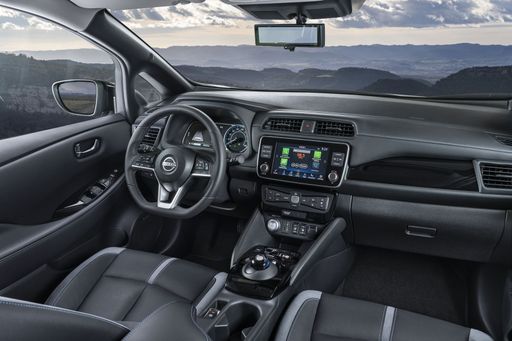 @ germany.nissannews.com
@ germany.nissannews.com
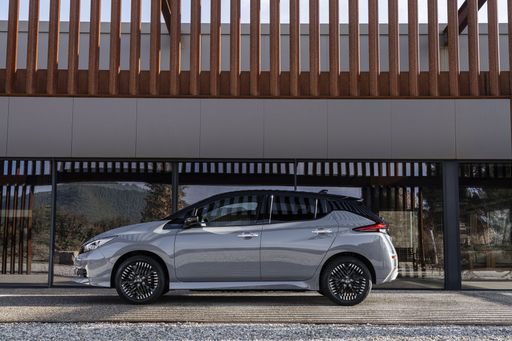 @ germany.nissannews.com
@ germany.nissannews.com
Suzuki Vitara
The Suzuki Vitara impresses with its compact design and robust stance, making it ideal for both urban and off-road adventures. Its sleek lines and modern aesthetics ensure it stands out on the road, complemented by a comfortable and high-tech interior. The Vitara offers a smooth and engaging driving experience, combining efficiency with practicality.
details @ Suzuki
@ Suzuki
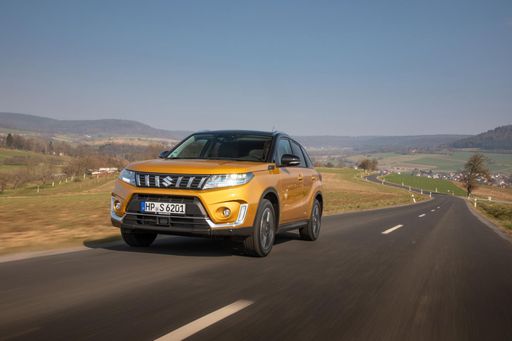 @ Suzuki
@ Suzuki
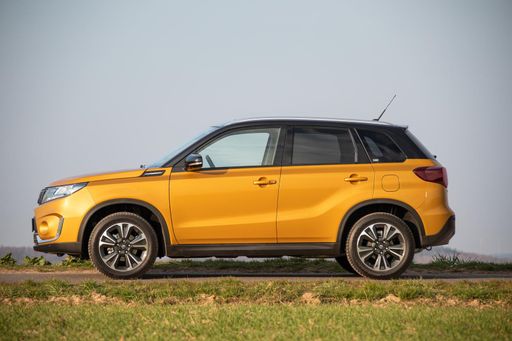 @ Suzuki
@ Suzuki
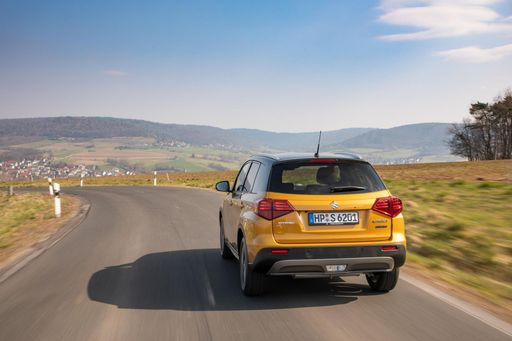 @ Suzuki
@ Suzuki
 @ Suzuki
@ Suzuki
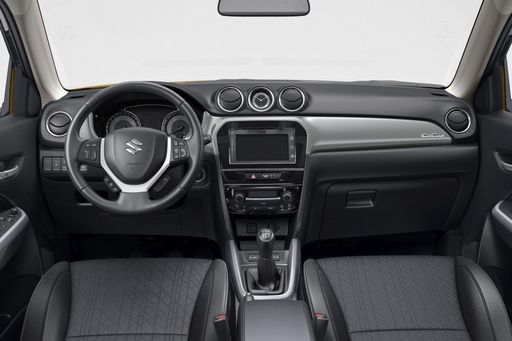 @ Suzuki
@ Suzuki
Nissan Hoja vs Suzuki Vitara: A Comprehensive Comparison
The automotive market is continually evolving, with manufacturers striving to innovate and meet the needs of a diverse consumer base. In this article, we delve into a detailed comparison between the Nissan Hoja and the Suzuki Vitara, two compelling options in the hatchback and SUV segments, respectively. We will explore their technical specifications, performance capabilities, and innovative features to help you make an informed decision.
Body and Dimensions
The Nissan Hoja embodies the compact nature of a hatchback, measuring 4490 mm in length, 1788 mm in width, and 1540 mm in height. Its design, optimized for urban driving, offers a trunk capacity of 394 liters, making it practical for day-to-day use.
On the other hand, the Suzuki Vitara stands as a robust SUV, with slightly shorter dimensions at 4185 mm long, 1775 mm wide, and 1595 mm high. Despite its smaller trunk capacity of 375 liters, the Vitara’s SUV styling presents a higher driving position and a sense of ruggedness that appeals to adventure seekers.
Engine and Performance
The Nissan Hoja is a front-wheel-drive electric hatchback that showcases Nissan's commitment to sustainability. It boasts two variants of electric power, generating between 150 to 217 HP, with torque values ranging from 320 to 340 Nm. The Hoja’s accelerated performance is impressive, achieving 0-100 km/h in as little as 6.9 seconds. With a top speed of 157 km/h and an electric range of up to 385 km, the Hoja is an excellent option for eco-conscious drivers.
Conversely, the Suzuki Vitara offers more traditional petrol engine options, available in hybrid variants. While its power output is slightly lower, ranging from 116 to 129 HP with a torque of 235 Nm, it delivers commendable efficiency, consuming between 5.0 to 5.6 L/100km. The Vitara's acceleration ranges from 9.5 to 12.7 seconds for 0-100 km/h, with a top speed of 190 km/h, reflecting its potential for lively performance on the highway.
Transmission and Drive Types
The Nissan Hoja features an automatic transmission with a reduction gearbox, ensuring smooth and efficient electric power delivery. Its front-wheel-drive layout enhances handling in urban conditions, making it a suitable choice for city dwellers.
On the other hand, the Suzuki Vitara offers both manual and automatic transmission options along with front-wheel and all-wheel drive configurations. This versatility allows drivers to choose a setup that best suits their driving conditions, whether in urban settings or off-road adventures.
Comfort and Interior Features
Both vehicles accommodate five passengers comfortably, but the interior experiences differ significantly due to their design philosophies. The Nissan Hoja focuses on modernity and minimalism, emphasizing technological integration with features designed for electric vehicle users.
The Suzuki Vitara, with its SUV stature, offers a more rugged and spacious cabin with additional storage options, appealing to families and those seeking adventure. Its interior design is functional yet stylish, with well-placed controls and user-friendly interfaces.
Usage and Practicality
As an electric vehicle, the Nissan Hoja boasts an impressive CO2 efficiency class of A, making it an attractive option for environmentally conscious consumers. Its lower curb weight of 1580 kg contributes to its impressive range and efficiency, making it ideal for city commuting.
In contrast, the Suzuki Vitara, classified within the D and C CO2 efficiency classes, is still competitive despite its reliance on petrol engines. With a curb weight ranging from 1255 kg to 1395 kg, it strikes a balance between performance and fuel efficiency, catering to those who prefer hybrid driving with flexibility for longer road trips.
Conclusion: Which One Is Right for You?
The choice between the Nissan Hoja and Suzuki Vitara ultimately hinges on your priorities. If sustainability, electric efficiency, and a compact design are your primary concerns, the Nissan Hoja shines with its electric capabilities. However, if you seek versatility, off-road potential, and a traditional driving experience, the Suzuki Vitara offers the robust features of an SUV with hybrid options.
In conclusion, both vehicles are formidable contenders in their segments, showcasing the best of what Nissan and Suzuki have to offer. Evaluate your driving needs, lifestyle, and preferences to determine which model aligns best with your automotive lifestyle.

|

|
|
|
|
Costs and Consumption |
|
|---|---|
|
Price
30800 - 37200 £
|
Price
23200 - 30400 £
|
|
Consumption L/100km
-
|
Consumption L/100km
5 - 5.6 L
|
|
Consumption kWh/100km
16.7 - 17.8 kWh
|
Consumption kWh/100km
-
|
|
Electric Range
270 - 385 km
|
Electric Range
-
|
|
Battery Capacity
39 - 59 kWh
|
Battery Capacity
-
|
|
co2
0 g/km
|
co2
113 - 129 g/km
|
|
Fuel tank capacity
-
|
Fuel tank capacity
47 L
|
Dimensions and Body |
|
|---|---|
|
Body Type
Hatchback
|
Body Type
SUV
|
|
Seats
5
|
Seats
5
|
|
Doors
5
|
Doors
5
|
|
Curb weight
1580 - 1756 kg
|
Curb weight
1255 - 1395 kg
|
|
Trunk capacity
385 - 394 L
|
Trunk capacity
289 - 375 L
|
|
Length
4490 mm
|
Length
4185 mm
|
|
Width
1788 mm
|
Width
1775 mm
|
|
Height
1540 - 1545 mm
|
Height
1595 mm
|
|
Payload
384 - 415 kg
|
Payload
375 - 395 kg
|
Engine and Performance |
|
|---|---|
|
Engine Type
Electric
|
Engine Type
Petrol MHEV, Full Hybrid
|
|
Transmission
Automatic
|
Transmission
Manuel, Automatic
|
|
Transmission Detail
Reduction Gearbox
|
Transmission Detail
Manual Gearbox, Automated Manual
|
|
Drive Type
Front-Wheel Drive
|
Drive Type
Front-Wheel Drive, All-Wheel Drive
|
|
Power HP
150 - 217 HP
|
Power HP
116 - 129 HP
|
|
Acceleration 0-100km/h
6.9 - 7.9 s
|
Acceleration 0-100km/h
9.5 - 12.7 s
|
|
Max Speed
144 - 157 km/h
|
Max Speed
180 - 190 km/h
|
|
Torque
320 - 340 Nm
|
Torque
235 Nm
|
|
Number of Cylinders
-
|
Number of Cylinders
4
|
|
Power kW
110 - 160 kW
|
Power kW
85 - 95 kW
|
|
Engine capacity
-
|
Engine capacity
1373 - 1462 cm3
|
General |
|
|---|---|
|
Model Year
2019
|
Model Year
2024
|
|
CO2 Efficiency Class
A
|
CO2 Efficiency Class
D, C
|
|
Brand
Nissan
|
Brand
Suzuki
|
Nissan Leaf
Introduction to the Nissan Leaf: A Pioneer in Electric Mobility
The Nissan Leaf has established itself as a trailblazer in the realm of electric vehicles (EVs) since its launch. As we delve into its present-day iterations, the Leaf continues to soar in popularity due to remarkable advancements in technology and sustainability. Let's explore what makes the Nissan Leaf a standout in today's automotive market.
Power and Performance: Under the Hood of the Nissan Leaf
The Nissan Leaf boasts a power output ranging from 150 to 217 PS, depending on the battery option chosen. The vehicle's electric motor, a product of cutting-edge engineering, offers instant torque ranging from 320 to 340 Nm, resulting in impressive acceleration capabilities. The 0 to 100 km/h dash is achieved in as little as 6.9 seconds, showcasing its prowess in electric performance.
Battery Technology: Efficient Energy Management
When discussing the Nissan Leaf, battery technology is at the forefront. The available battery capacities range from 39 to 59 kWh, supporting an electric range between 270 to 385 km. This flexibility allows drivers to choose a model that best fits their driving habits, providing peace of mind for longer journeys without frequent recharging.
Sustainability: The Environmental Edge
One of the primary attractions of the Nissan Leaf is its commitment to sustainability. As an all-electric vehicle, it produces zero CO2 emissions, placing it in the top tier of the CO2-efficiency class with an 'A' rating. This clean energy approach contributes significantly to reducing environmental impact and supports Nissan's drive towards a greener future.
Design and Comfort: Aesthetic Appeal and Practicality
The Nissan Leaf is not just about efficiency; it's also designed for comfort and utility. With its sleek hatchback body and dimensions of 4490 mm in length, 1788 mm in width, and a height of up to 1545 mm, it offers ample interior space. The boot capacity ranges from 385 to 394 litres, providing sufficient storage for everyday needs. The model accommodates five passengers comfortably, ensuring a pleasant ride for everyone.
Innovations and Safety: Advanced Features for Peace of Mind
Nissan equips the Leaf with an array of intelligent features that enhance safety and convenience. The available equipment lines, including N-CONNECTA, Tekna, e+ N-CONNECTA, and e+ Tekna, offer varying levels of technology integration. ProPILOT Assist, e-Pedal, and a comprehensive suite of driver-assistance technology are just a few examples that highlight Nissan's commitment to innovation in the EV market.
Conclusion: The Nissan Leaf Continues to Lead
With prices ranging from €35,900 to €43,400, the Nissan Leaf remains an attractive choice for those looking to embrace electric mobility. It perfectly balances performance, design, and sustainability, making it a compelling choice in the competitive EV landscape. The Nissan Leaf not only represents the future of driving but also reinforces why it continues to be a leader in the electric vehicle community.
Suzuki Vitara
Introduction to the Suzuki Vitara: A Blend of Style and Efficiency
The Suzuki Vitara has long been a favourite among fans of compact SUVs, offering a unique combination of style, performance, and technological innovation. The 2024 range continues to build on this strong foundation, presenting drivers with an attractive package that meets modern driving demands with impressive efficiency and capability.
Powertrain Innovations: Efficient Hybrid Options
At the heart of the Suzuki Vitara lineup lies a well-engineered selection of hybrid powertrains designed to cater to a variety of driver preferences. The vehicles are available with both mild-hybrid and full-hybrid systems, which provide a perfect balance between performance and fuel efficiency. The mild-hybrid models feature a 1.4-litre Boosterjet engine, while the full-hybrid variants are powered by a 1.5-litre Dualjet engine. The combination of these engines with hybrid technology results in an impressive fuel consumption range of 5 to 5.6 L/100km.
Performance and Driving Experience
The driving experience offered by the 2024 Suzuki Vitara is enhanced by its powertrain options, delivering between 116 and 129 PS. Depending on the model, the Vitara can achieve a top speed between 180 and 190 km/h and a 0-100 km/h acceleration time ranging from 9.5 to 12.7 seconds. The option of front-wheel or all-wheel drive (ALLGRIP) ensures versatility and adaptability across different terrains, providing superior handling and control, especially in challenging weather conditions.
Advanced Features and Comfort
The Suzuki Vitara doesn't compromise on comfort and advanced features. Depending on the chosen trim level, which includes Club, Comfort, Comfort ALLGRIP, Comfort+, and Comfort+ ALLGRIP, the Vitara is equipped with an array of modern amenities. These trim lines ensure that every driver can find a Vitara that matches their specific needs and preferences. From advanced infotainment systems to climate control options, the Vitara ensures a connected and comfortable driving experience.
Practicality Meets Style
With a body style classified as an SUV, the Suzuki Vitara combines practical space with an aesthetically pleasing design. Measuring 4185 mm in length, 1775 mm in width, and 1595 mm in height, the Vitara offers a substantial interior space with seating for five passengers and a boot capacity ranging from 289 to 375 litres. The thoughtfully designed interior and exterior ensure that practicality does not detract from its stylish appearance.
Efficiency and Cost-Effectiveness
The Suzuki Vitara's efficiency is further highlighted by its competitive CO2 emissions, ranging from 113 to 129 g/km, aligning with CO2 efficiency classes C and D. The cost of ownership is made manageable with monthly costs estimated between €858 and €971, while maintaining economical running with costs per kilometre ranging from 34.3 to 38.9 cents.
Conclusion: A Wise Choice for Today’s Drivers
Overall, the 2024 Suzuki Vitara is a compelling option for those seeking a compact SUV that delivers on performance, efficiency, and modern technology. With its blend of hybrid innovations, practicality, and a range of trim options, the Vitara is well-equipped to meet the diverse needs of contemporary motorists, offering a driving experience that is both enjoyable and sustainable.
The prices and data displayed are estimates based on German list prices and may vary by country. This information is not legally binding.
